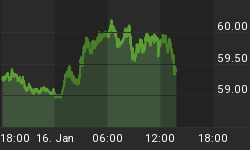Fundamentals and Technicals Both Waning
Deterioration in risk-on vs. risk-off charts contributed to our incremental risk-reduction moves last Thursday and Friday. Charts feed off of fundamental perceptions/economic data. The data on the housing front did nothing to change perceptions Monday. From Bloomberg:
Purchases of new homes in the U.S. fell more than forecast in December, ending the industry's best year since 2008 on a sour note. Sales decreased 7 percent to a 414,000 annualized pace, lower than any estimate of economists surveyed by Bloomberg, after a 445,000 rate in November that was weaker than previously calculated, the Commerce Department reported today in Washington. The housing rebound has cooled as bad weather slowed the market and as buyers adjust to higher borrowing costs and rising property values, which have hurt affordability.
Investing is about probabilities. It is prudent to put our capital in harm's way when the odds of success are favorable. The most favorable odds occur in quadrant 1 below, when the fundamentals and technicals are aligned in a bullish manner. Unfortunately, in the present day, the odds are shifting from quadrant 1 toward quadrant 4. Until that concerning shift subsides, it is prudent to limit our exposure to stocks.

Market's Tolerance For Risk Is Shifting
This week's stock market video summarizes the changes in the observable evidence and provides specific examples of the rationale behind reducing risk exposure last week.
2008: This Is What Economic Fear Looks Like
As we have noted in the past, all investing involves opportunity costs. If we look at the markets from an opportunity cost, or "would I rather own this or that" perspective, we can gain valuable insight into the market's risk-reward profile. Thinking in extremes also provides insight. In the credit markets, when investors are confident, they want to chase yield (JNK). When they are (a) concerned about the economy, and (b) not expecting the Fed to raise rates anytime soon, they prefer to own longer-dated Treasury bonds (TLT). Please save your "maturity mismatch" comments; we are thinking in opportunity cost terms, not credit spread terms. The 2008 chart below shows what maximum fear looks like in the credit markets.

This Is What 2014 Looks Like
During the rally off the October 9 low, demand for yield was clearly outstripping demand for conservative bonds. In early 2014, that is no longer the case (see red arrow below). As long as the chart below maintains a "risk-off" look, it will check concerning boxes for the stock market bulls.

Emerging Markets Contributing To Fundamental Concerns

Part of the fundamental/technical push from quadrant 1 toward quadrant 4 is being fueled by increasing concerns about emerging economies. From Reuters:
The declines have been triggered by signs of weakness in the Chinese economy, including fears it may eventually face a debt crisis, and concerns about how much hot money may exit some markets as the U.S. Federal Reserve pulls back from its bond-buying program. The stimulus that program has given the world economy in the past few years is widely credited with big gains in stocks and other asset prices.
Investment Implications - Shorts Starting To Win
If the market answers the question "would you rather be long or short" with "short", it tells us something about all our long positions. Notice during the entire rally off the October 9 low, the answer was "we would rather be long" (see green arrows below); that is no longer the case, which is one of the reasons we cut back our exposure to stocks significantly last Thursday and Friday.

In addition to an equity scale-back call, our market model added a position in TLT last week. Our portfolios are now comprised of cash, bonds, and equities, including broad U.S. exposure (SPY) and technology (QQQ). For us to shift from incremental risk-reduction mode to redeploy-cash mode, the observable evidence needs to improve. The tweet below reminds us of an important event on this week's financial calendar that could spark a return to risk-on or an acceleration in the risk-off trade.

















